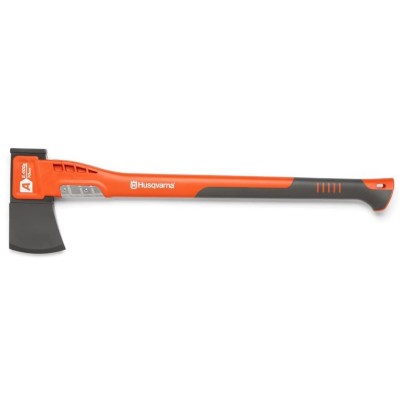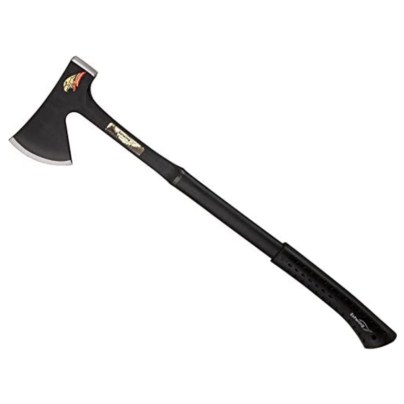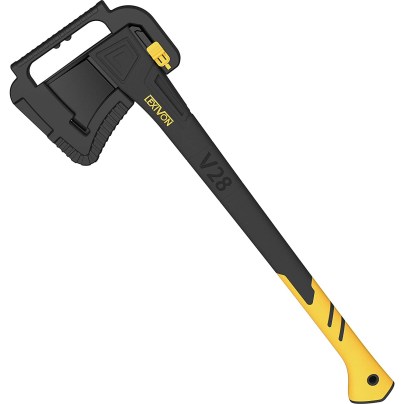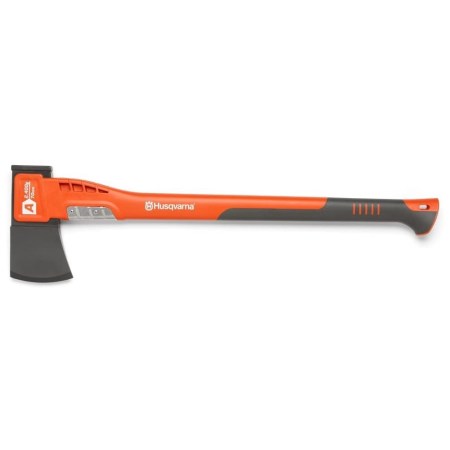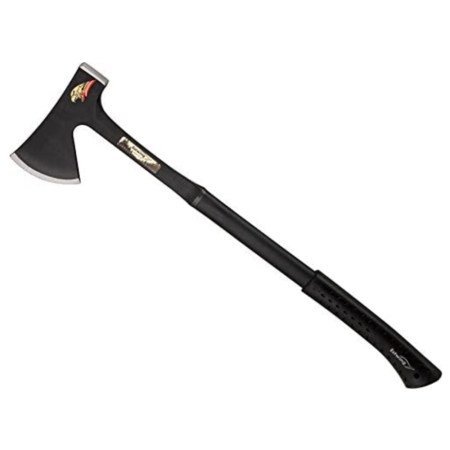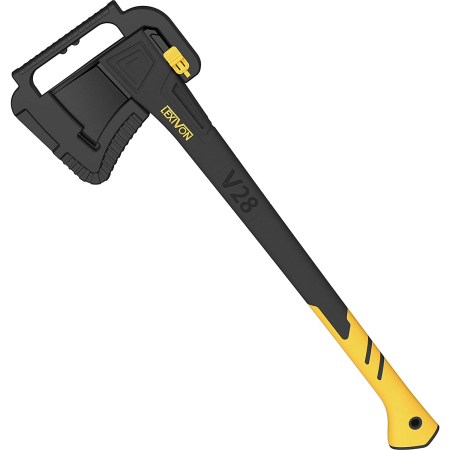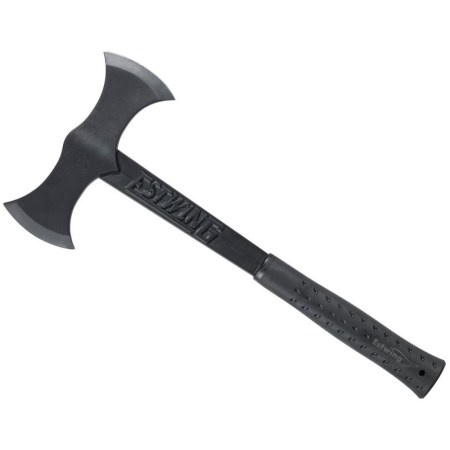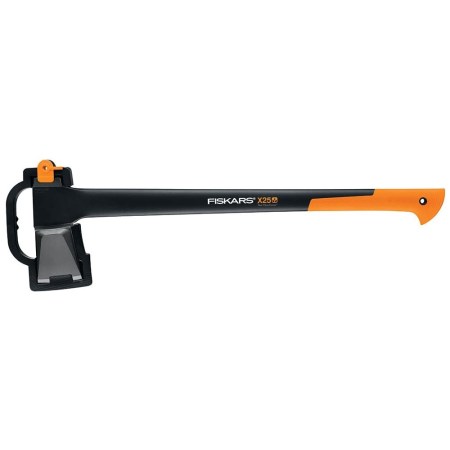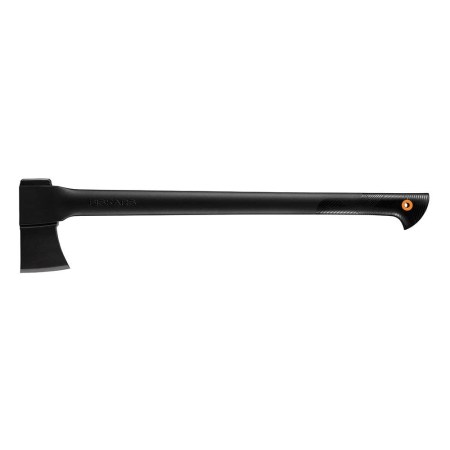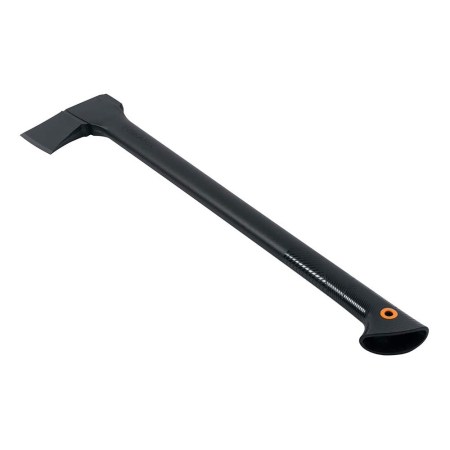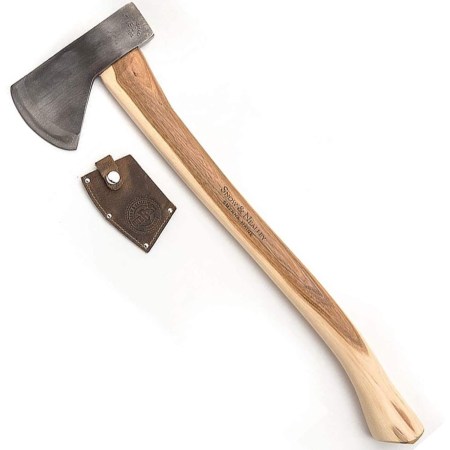We may earn revenue from the products available on this page and participate in affiliate programs. Learn More ›
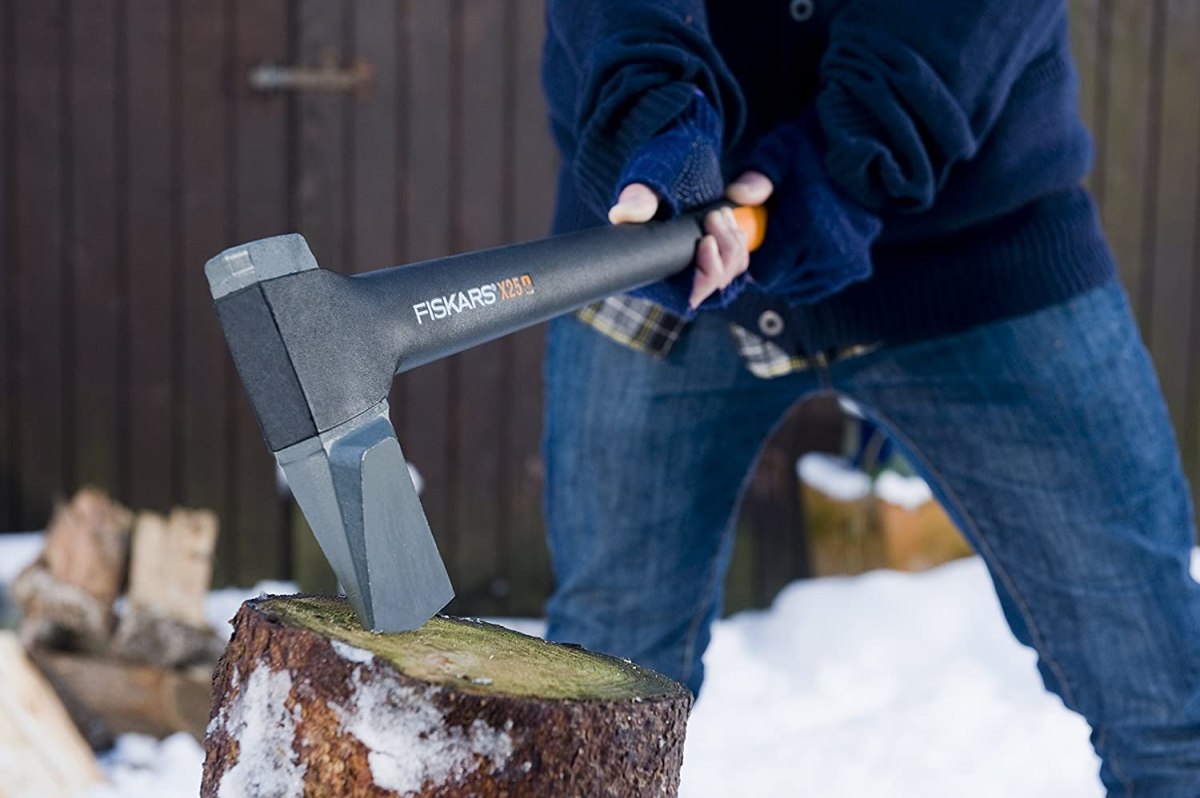
Bushcraft, also referred to as wilderness survival skills, requires an extensive amount of knowledge and talents. Among the most essential survival skills are staying warm and building shelter, which often require a plentiful supply of wood that you’ll need to process on your own. This crucial task requires the right tools.
Unfortunately, the size and number of tools that can be taken into the woods is severely limited. It’s neither wise nor practical to pack a full-size splitting maul to chop firewood, but a regular pocket knife simply won’t cut it. You really need an axe with characteristics suitable for bushcraft. Read on to learn what features to look for as you shop for the best bushcraft axe for your needs, and then discover some of the top-rated products on the market in several categories.
- BEST OVERALL: Husqvarna A2400 Axes, Orange/Gray
- RUNNER-UP: Estwing Special Edition Camper’s Axe – 26″
- BEST BANG FOR THE BUCK: LEXIVON V28 Chopping Axe, 28-Inch
- BEST DOUBLE-BIT: Estwing Double Bit Axe – 38 oz Wood Splitting Tool
- BEST SPLITTING AXE: Fiskars X25 Splitting Axe, 28-Inch
- BEST FELLING: Fiskars 375581-1001 Chopping Axe, 28-Inch
- BEST LARGE: Fiskars 375841-1001 X27 Super Splitting Axe, 36-Inch
- ALSO CONSIDER: Snow & Nealley Hudson Bay Axe
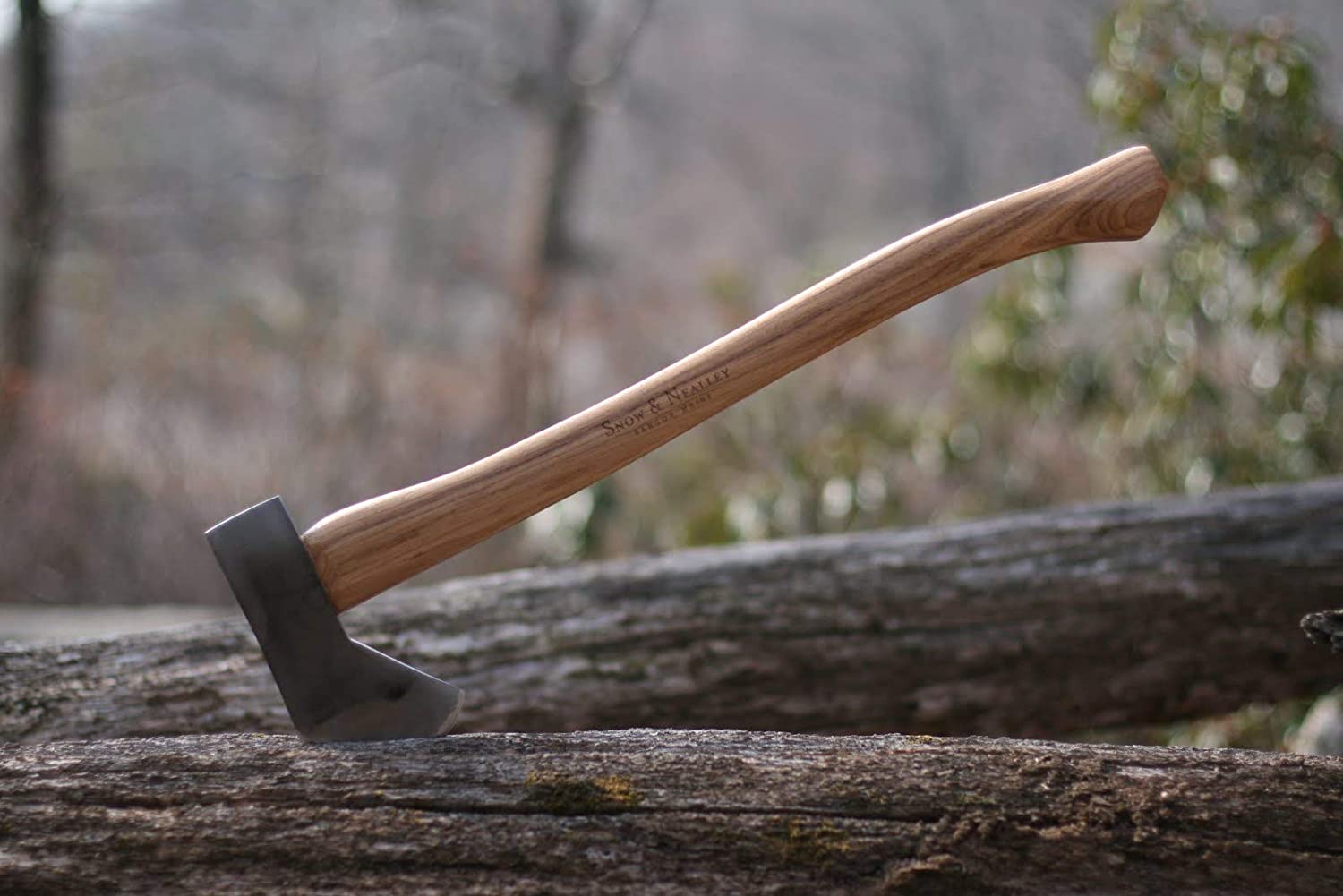
What to Consider When Choosing the Best Bushcraft Axe
There are a variety of factors that will determine if an axe is suitable for bushcraft. The purpose of the axe and its type, size, and weight all influence whether a particular axe is the right choice.
Purpose
Bushcraft axes are most often used for chopping down (or “felling”) trees and/or splitting firewood. However, they can also be used for:
- clearing limbs from felled trees
- chopping logs into manageable sizes prior to splitting
- splitting logs
- processing kindling
- starting a flint or steel fire starter
- hammering in tent pegs
- carving
- processing wild game for meat
- cutting and breaking through ice to access fresh water
- self-defense
How easy it is to perform each of these functions will largely depend on the type of bushcraft axe in use.
Type of Axe
There are two main categories of axes: single-bit and double-bit. Single-bit axes are considered the “standard” axe style and consist of a metal head on top of a handle, with a cutting blade on one side and a flat or rounded hammering surface on the other. Double-bit axes have two cutting blades, one on each side of the metal head.
Within those two categories, three subcategories are based on the axe’s handle size. Full-size, or standard, axes have 28-inch to 36-inch handles. Small axes (also called “camper’s axes” or “boy’s axes”) have 14-inch to 28-inch handles. Both small and standard axes are designed to be used with two hands.
Hatchets are the smallest type of axe, designed for one-handed use with a handle smaller than 14 inches. Single-bit hatchets can also be used like conventional hammers for a variety of bushcraft tasks (like pounding in tent pegs), making them incredibly versatile. In fact, a hatchet’s versatility and lightweight, compact nature have made it a favorite among outdoor enthusiasts.
Finally, there are three specific types of axes within the above categories: felling, splitting, and multi- or general-purpose axes. Felling axes are designed explicitly to fell trees; splitting axes are made for splitting wood; and general-purpose axes can both fell and split. Often, a double-bit axe will feature a different type of blade on either side, so one side can be used primarily for felling and the other for chopping or general-purpose tasks.
Each of these types has its advantages and disadvantages, but the smaller varieties are considered the most ideal for bushcraft since they’re light, compact, and, as a result, the most portable. After all, that’s why smaller axes are commonly referred to as the abovementioned “camper’s axes.”
Handle
Axe handles can be made from wood, metal, or a fiberglass composite material, each of which has a particular set of pros and cons.
- Wooden axe handles are comfortable to hold, absorb shock well, and are reasonably durable. However, a wooden handle’s durability and short-absorption capacity will depend on the particular type of wood. Hickory wood is most commonly used for axe handles since it is robust and absorbs shock exceptionally well.
- Metal handles are highly durable and can withstand considerably more abuse than a wooden handle. However, metal handles are much heavier and don’t absorb vibrations nearly as well as wooden handles, so they’re more fatiguing to use for extended periods of time. Consequently, metal handles are usually only seen on hatchets and smaller axes. They’re also often covered with a rubber grip that does help absorb some vibrations and makes the axe more comfortable to hold.
- Fiberglass offers a middle ground between the durability of metal and the comfort of wood. Fiberglass handles are much more robust than wooden handles but are just as effective at absorbing vibrations (or more so). Depending on the manufacturer, they can even be stronger than steel if they’re properly reinforced. The main disadvantages are that they’re often the most expensive and the smooth surface can be difficult to securely grasp unless it’s covered with a nonslip rubber grip.
In addition to the material the handle is made of, the handle’s length will largely determine how well the axe functions for specific purposes. Longer handles have greater leverage, meaning the user can produce more striking power with a longer handle using the same amount of effort as swinging a shorter one. The trade-off is that longer handles are typically heavier and less portable. They also require more swinging room, making them difficult to wield in densely wooded areas with surrounding brush that could hinder the swing.
Handles between 18 and 28 inches are generally recommended for bushcraft since they offer the best compromise between striking power and portability. The choice between a wooden and fiberglass handle is largely a matter of personal preference (and a source of heated debate), but heavy metal handles are generally not advisable unless it’s a shorter, lighter handle.
Head Weight and Profile
An axe head’s weight will also dictate how well it performs for specific purposes. Heavier heads have greater striking power since they have a higher center of gravity (see “Balance” below), but that weight comes with a cost. Heavy heads are more fatiguing to use and are more difficult to achieve accurate strike placement. The greater overall weight also makes them harder to transport through the bush.
An axe head’s profile can be designed to serve a specific purpose (like felling or splitting) or have a “general-purpose” design. Axe heads made for splitting have wide, wedge-shaped blades to split wood fibers horizontally with the grain. Felling axes, on the other hand, have thin and sharp blades to efficiently and effectively cut perpendicularly to wood fiber (against the grain) to cut down a tree. Multi- or general-purpose axes have a medium-thick profile suitable for both cutting and splitting.
Balance
The balance of an axe refers to where its center of gravity is located. Since the weight of the head is greater than the weight of the handle, an axe’s center of gravity is located just below the head near the top of the handle. All other things being equal, an axe with a center of gravity closer to the head will have greater striking power, since the force of gravity will cause the head to drop toward the striking surface more rapidly and with greater momentum. Consequently, axes with heavy heads and shorter handles have the highest center of gravity, although a shorter handle will offer less striking leverage.
A well-balanced axe has an ideal ratio between the leverage provided by the handle’s length and the striking power from a higher center of gravity to achieve the axe’s primary purpose. This is one of the main reasons splitting axes have heavy heads and relatively shorter handles, and felling axes have lighter heads and longer handles.
Blade and Design
The blade of a bushcraft axe needs to be sturdy enough to withstand the abuses of wilderness survival activities. The quality of the blade material can vary widely from manufacturer to manufacturer, but most are made with a variety of high-carbon steel that’s resistant to breaking and will maintain a sharp edge for a reasonably long period of time. The gold standard for axes is Swedish steel, which is often harder and tougher than other forms. However, axe blades made with Swedish steel—and other high-quality steels—are usually the most expensive.
Our Top Picks
Keeping the above characteristics in mind, review the top picks below for some of the best bushcraft axes on the market today for splitting, felling, and several other categories.
Best Overall
Husqvarna A2400 Axes, Orange/Gray
See ItHusqvarna’s A2400 is a general-purpose axe capable of tackling just about any bushcraft needs. It features a 2.2-pound head with a profile designed for both splitting and felling. The A2400 features a 27-inch reinforced composite handle that’s both lightweight and durable, offering the ideal balance between swinging power and portability. The main drawbacks are that it’s relatively expensive, and the fiberglass handle doesn’t include a nonslip grip that could make this axe easier and more comfortable to use.
Runner-Up
Estwing Special Edition Camper’s Axe – 26u0022
See ItEstwing’s Special Edition axe offers the versatility and durability demanded by avid outdoorsmen. It features a steel 26-inch handle with a shock-absorbing leather grip that reduces vibration by up to 70 percent and a 4-inch hand-sharpened blade with a splitting and felling profile. A black powder-coated finish protects the blade from the damaging effects of environmental exposure (like rust), and Estwing includes a nylon sheath to protect the blade when the axe is not in use. The main disadvantage is that the steel handle makes the axe heavier than most, making it less ideal for long treks in the bush.
Best Bang For The Buck
LEXIVON V28 Chopping Axe, 28-Inch
See ItLEXIVON’s V28 chopping axe supplies an impressive range of versatility and features while being affordable enough to accommodate almost any bushcrafter’s budget. The roughly 3-pound head is equipped with a felling profile, but it can also be used to split medium- to large-size logs. The heavy head is complemented by the 28-inch handle that provides plenty of swinging power and is made with a lightweight yet rugged fiberglass handle. The handle is also equipped with a nonsplit rubber grip that contributes to comfortable use. For the price, LEXIVON’s V28 axe offers a strong value for outdoorsmen of all skill and experience levels.
Best Double-Bit
Estwing Double Bit Axe – 38 oz Wood Splitting Tool
See ItEstwing’s double-bit axe features two hand-sharpened and durable axe heads for felling, splitting, and other tasks encountered in the bush. Estwing even includes a nylon sheath to protect the blade when the axe is being stored or transported. The all-steel handle is made to last, and the comfortable, attractive, and shock-absorbing grip reduces vibration up to 70 percent. Although it’s likely not large enough to fell bigger trees or split large logs, the compact size of this axe is ideal for easy transport in the wilderness.
Best Splitting Axe
Fiskars X25 Splitting Axe, 28-Inch
See ItThe Fiskars X25 splitting axe boasts a heavy 4-pound head with a wide splitting-blade profile and a nonstick coating to prevent the head from getting stuck in logs after strikes. The 28-inch fiberglass handle is lightweight and durable, and it’s wrapped in a comfortable nonslip rubber grip. Fiskars designed this axe with the optimal balance to get the most out of every swing. They also include a protective sheath to keep the blade safe from damage when the axe is not in use.
Best Felling
Fiskars 375581-1001 Chopping Axe, 28-Inch
See ItFiskars’ chopping axe is equipped with a 2.31-pound head and a thin, sharp felling blade. Just like Fiskars’ splitting axe, the blade boasts a nonstick coating that keeps it from getting stuck in the tree after strikes. It features a 28-inch rugged fiberglass handle that provides plenty of swinging leverage without compromising portability and is optimally balanced with the head for felling trees. The main drawback is that the fiberglass handle doesn’t include a nonslip grip that could make it more comfortable to hold and easier to use.
Best Large
Fiskars 375841-1001 X27 Super Splitting Axe, 36-Inch
See ItFor maximum swinging leverage when splitting large logs, the Fiskars X27 splitting axe is hard to beat. Equipped with a 36-inch fiberglass handle and a 4-pound head with a wide splitting profile, this axe is designed to effectively and efficiently split even the largest logs. Although the long handle can be more difficult to produce accurate strikes, the nonslip grip makes the axe easier to control. However, the 36-inch length may be too long for many people to comfortably or accurately wield, and it’s likely too big to transport easily.
Also Consider
Snow u0026 Nealley Hudson Bay Axe
See ItThe Hudson Bay axe from Snow & Nealley features a 1.75-pound head with a profile suitable for splitting, felling, and many other bushcraft activities. The 24-inch hickory-wood handle is sturdy and comfortable to hold and use, and it’s compact and lightweight enough to easily transport through the wilderness. To protect the blade during outdoor adventures, this axe includes a rugged and attractive leather sheath. The main disadvantage is that it’s fairly expensive and may be too small and light for splitting large logs.
FAQs About Bushcraft Axes
When it comes to survival, it’s important to be completely clear about how to properly use bushcraft tools. For further information about using and caring for a bushcraft axe, see whether the answers to these common questions bring greater clarity.
Q: How do I sharpen a bushcraft axe?
Use a hand file, a sharpening stone, or a bench grinder to sharpen an axe.
Q: What is a good size for a bushcraft axe?
A handle size between 18 and 28 inches is ideal for a bushcraft axe—and the reason it’s sometimes referred to as a “camper’s axe.”
Q: How can I carry a bushcraft axe on a camping trip?
Some bushcraft axes may be small enough to transport inside a backpack, and most can be strapped onto the outside of a backpack.
